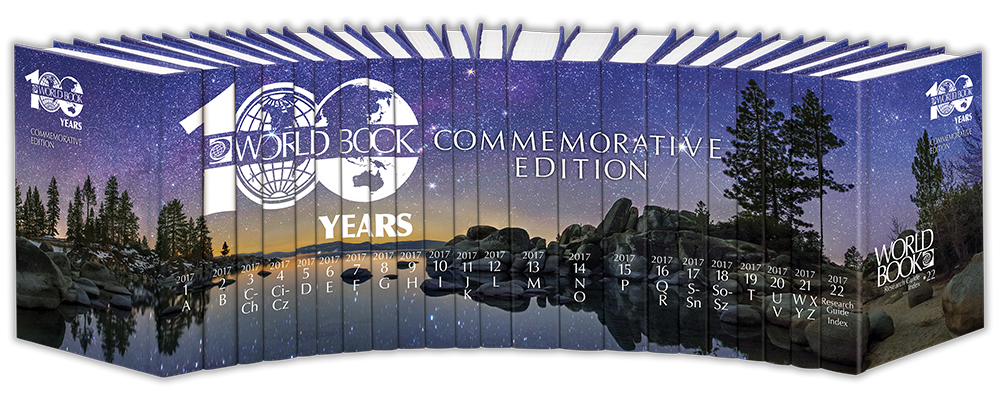Mount Everest, the highest mountain in the world, has fascinated Western explorers and adventurers since the British first saw it in the 1850’s. It towers 29,035 feet (8,850 meters) above sea level along the border between Tibet and Nepal, north of India. For many years, Mount Everest seemed an almost insurmountable challenge. The 1917 edition of the World Book Encyclopedia notes that “[m]any adventurous mountain-climbing scientists have endeavored to reach the summit of this giant among peaks, but no one has accomplished the feat.”
Since the publication of the 1917 edition, however, many people have “accomplished the feat” of scaling Mount Everest. Here are just three milestones in the history of summiting the mountain, taken from the 2017 edition of World Book.
- 1953: Edmund Hillary of New Zealand and Tenzing Norgay, a Nepalese Sherpa guide, became the first people to reach the summit of Mount Everest. Queen Elizabeth II of the United Kingdom knighted Hillary for the achievement.
- 1963: James W. Whittaker, accompanied by Nepalese guide Nawang Gombu, became the first American to reach the top.
- 1975: Junko Tabei of Japan became the first woman to reach the top.
What a difference 100 years make. What was just a dream in 1917 has become a reality many times over. Today, in fact, hundreds of people scale Mount Everest every year by joining commercial expeditions operated by licensed guides.
One more difference between the 1917 and 2017 editions. The 1917 edition says the mountain rises to a height of 29,002 feet (8,840 meters). But the 2017 edition says the mountain is 29,035 feet (8,850 meters) high.
Why the difference? The current World Book explains: “In 1999, a team of researchers used advanced satellite technology to calculate the mountain's height at 29,035 feet (8,850 meters). However, the same geological forces that created Mount Everest are still at work. The mountain will probably grow higher over the course of many years.”
So, not only is Mount Everest the world’s tallest mountain—it’s still growing!
THE WORLD BOOK DIFFERENCE
Throughout the nearly 100 years
of publication of The World Book
Encyclopedia many things have
changed, but World Book’s dedication
to providing timely, reliable, and
readable educational and reference
materials has not wavered.
Today, World Book remains dedicated
to fostering a deep desire to learn
in students of all ages. In print and
online, World Book content is especially
crafted with young readers in mind
to help ensure that their commitment
to reading is rewarded with easily
understandable text that engages
and educates.
THE WORLD BOOK ENCYCLOPEDIA 2017
Celebrating 100 years of publication!
